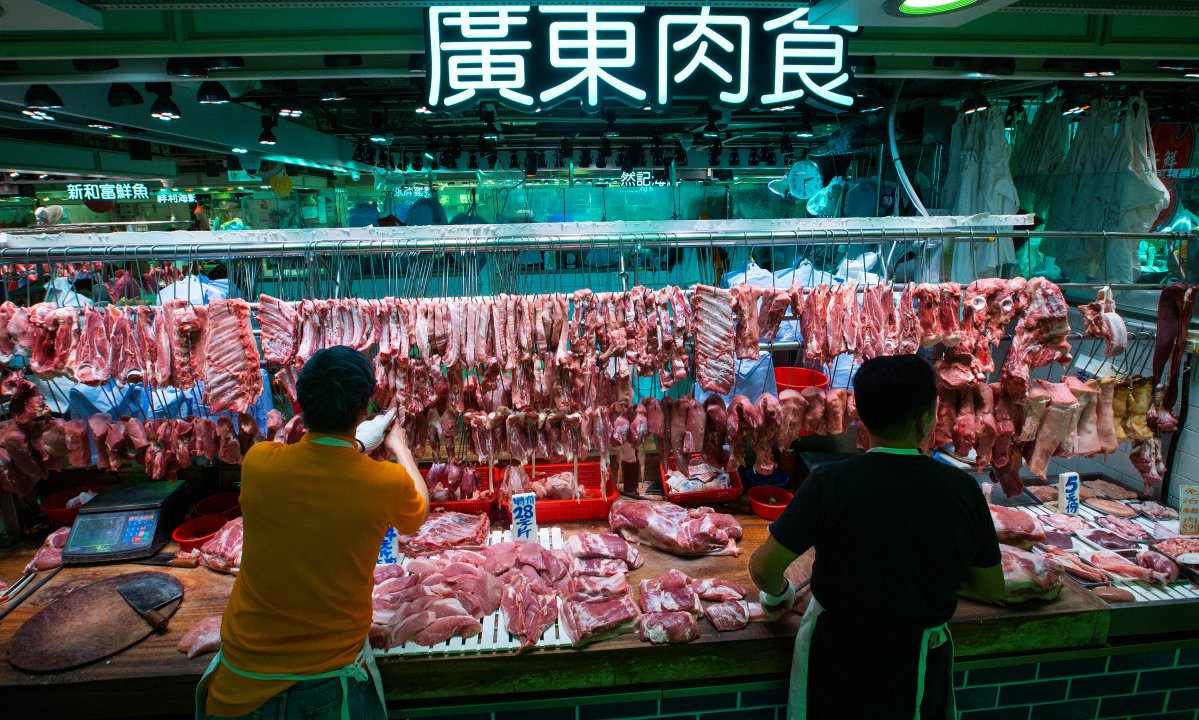A mysterious lung virus that has so far killed 17 people and sickened hundreds more may be the latest infection to come from China‘s wet markets.

While the definitive origin of the new strain of coronavirus is still under investigation, some of the first cases have been linked to a seafood market in the central Chinese city of Wuhan. Since then, people in Thailand, Japan, South Korea, Taiwan and the United States have been infected. Many of those infected from outside of China never visited the market, signalling a spread.
“It likely originated in some non-human animal and jumped to a human,” said Dr. Isaac Bogoch, an infectious disease specialist at Toronto General Hospital.
“In markets, or anywhere where non-human animals and humans have close contact with each other, we see this happen. Certainly, that’s what happened with the SARS outbreak in 2002.”
Wet markets — open marketplaces with stalls selling fresh meat and fish — are considered a traditional form of food retail in large Asian cities. Despite the expansion of modern supermarkets and grocers, wet markets have remained a mainstay for Chinese consumers and are often considered superior to big box stores.
What keeps people coming? It’s a cultural value and understanding of “freshness” coupled with an aversion to “non-fresh” or frozen food, according to one study.
“Wet markets serve as a space for cultivating relationships between consumers and their food, and trust between food vendors and consumers, which, in turn, provides assurances of freshness,” the study explains.
While in some Chinese cities, they’re deemed “outdated, disorderly and unsanitary” by local governments, they are “likely to remain key elements in the retail food landscape of China,” according to the study.
But the narrow, crowded markets — brimming with everything from freshly caught fish to live poultry and reptiles — are “a breeding ground” for new and dangerous infections, said Evangelyn Alocilja, a professor and researcher of biosystems at Michigan State University.
The close contact between humans and a wide array of live animals makes it easier for viruses to jump between species, she said.
“Animals harbour the virus. It’s a jump from animals to humans, but it’s similar to human-to-human transmission, too, in that somehow, you need fluid or some way for the person to get in contact with it,” Alocilja told Global News by phone. “It’s like this anytime there’s an open market that’s not properly sterilized.”
Official measures were put in place to keep the food security risk at bay after the Severe Acute Respiratory Syndrome (SARS) epidemic in 2002-03. The outbreak was pinpointed to a raccoon-like animal — a delicacy in southern China — being sold at markets. China was criticized for slow action on SARS, which ultimately killed hundreds and infected thousands globally.
The new coronavirus belongs to the same family as SARS but does not appear to be as dangerous at this time.
- Naloxone-resistant street drug linked to 9 deaths in Eastern Canada seized in Alberta
- ‘She gets to be 10’: Ontario child’s heart donated to girl the same age
- Buzz kill? Gen Z less interested in coffee than older Canadians, survey shows
- Bird flu risk to humans an ‘enormous concern,’ WHO says. Here’s what to know
Since SARS, Chinese authorities have fought to clean up the markets — and keep them clean — by beefing up its disease surveillance efforts.

Two decades later, while there have been some improvements on how the markets are monitored, including stricter sales of exotic animals, experts say health risks at wet markets haven’t gone away and the rules aren’t always followed.
“People who work in these markets can certainly acquire these infections,” Bogoch said. “The key thing here is that this likely infected humans, maybe one or maybe several, and then after that, there was an ongoing human-to-human transmission which seems to have propagated this outbreak.”
The wet market in Wuhan was shut down on Jan. 1 after health authorities linked it to the pneumonia-like outbreak.
What makes the markets particularly risky as coronavirus lingers is the Lunar New Year, a peak travel season for Chinese citizens. Shoppers will likely flock to wet markets to stock up on foodstuffs for holiday dishes and celebrations.
Alocilja said the shutdown of the single market won’t prevent the same virus from making its way to other markets in the province and beyond.
“It’s not specific to China,” she said. “All viruses need is some kind of medium to survive.”
While the markets could benefit from improved sanitary practices, Alocilja believes that any new rules to help prevent future virus spread need to be specific to the culture.
China doing any more to tighten regulations on the markets is “wishful thinking,” she said.
“To control these places, a generic solution for these particular markets won’t work; it won’t make sense. It has to be specific to the place, to the culture, then it’ll have a better chance of being followed,” she said.
“The wet market is a part of China’s culture. You can’t simply get out of your culture.”
— With files from Reuters, the Associated Press and Global News’ Alley Wilson








Comments